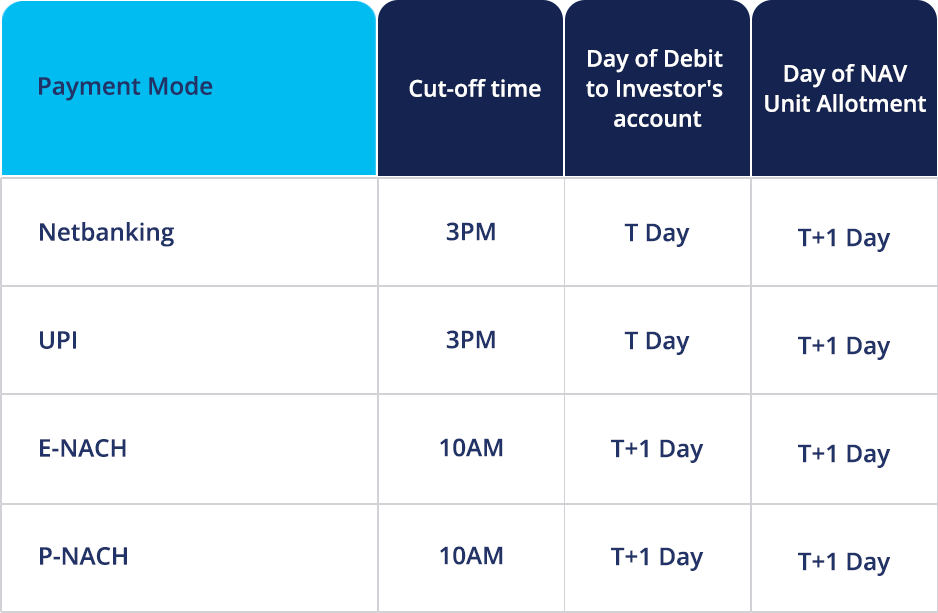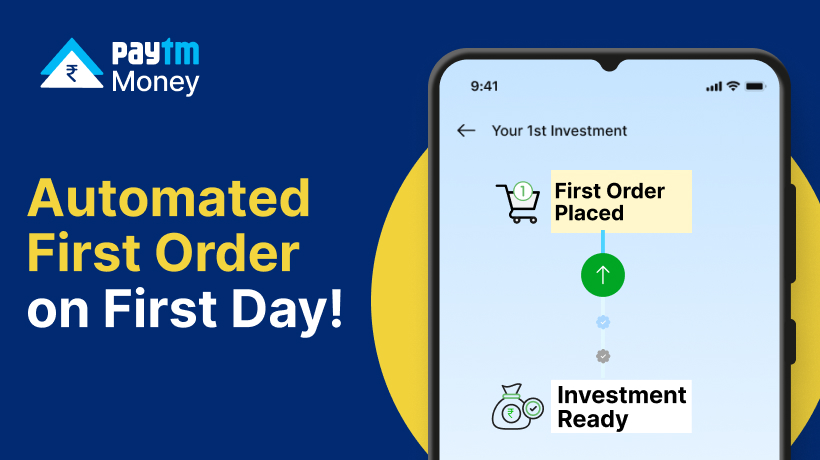Funds Settlement for Mutual Fund SIP/Lumpsum Transaction3 min read
Here’s a quick explainer on how funds are settled for every Mutual Fund SIP/Lumpsum transaction.
First off, the stakeholders in the transaction (be it through net banking, UPI or mandate-based payments), apart from the investor of course, involve the following:
- Payment Gateway
- Investor’s Bank (for debit of funds)
- AMC (for settlement and reconciliation)
Secondly, there are two important days to be considered
- Transaction Date (“T”)
- Settlement Date
The abbreviations T+1, T+2, and T+3 refer to the settlement dates of transactions that occur on a Transaction Date plus 1 day, plus 2 days, and plus 3 days, respectively.
Let’s look at the steps involved in detail.
Step 1 – Once an investor places an order to purchase a unit of a Mutual Fund through netbanking or UPI, the fund settlement is done in bulk to the AMC and this is usually done on T+1. Hence the transaction is carried out at the net asset value (NAV) of T+1 (next day’s).
The investment amount is settled to the AMC’s bank account and on further reconciliation the units are allocated and investment is completed. Typically this takes two to three days.
Note: NAV is calculated daily after market close. NAV is provided basis the credit realisation in the AMCs account.
Step 2 – Depending on the type of mutual fund, the trade is cleared through a third-party payment gateway.
Step 3 – Once the money is settled by the payment gateway to the AMCs, a reconciliation process starts. This is the process of matching up trade orders, registering and transferring share ownership. It typically takes 2-3 days after the transaction date for the complete reconciliation between the different parties (Channel partner, payment gateways, RTAs and AMCs)
However, Liquid Funds close and settle on the same day as the trade date.
Step 4 – The NAV is allocated on the basis of the date and time when the money is settled to the AMC’s account. Thus, it means that it may take a day or two more for the transaction to be considered as final and closed.
In the case of a mandate transaction, the money that a customer owes must be available in their account from the day the transaction is initiated (T-1).
As per the NPCI guidelines, the debit requests (transaction initiation) for mandate transactions should reach NPCI on T-1(the working day before the actual SIP date)
Let’s look at the cut-off time for a lumpsum and SIP Investments across various pay modes.
Mutual Fund Lumpsum Investment
Below table has the cut-off time and NAV unit allotment based on the payment mode for lumpsum investment in Mutual Fund.

Mutual Fund SIP Investment
Below table is the cut-off time and NAV unit allotment for SIP investment in Mutual Fund:



Important Note – Paytm Money does not hold the investor’s money in it’s account at any point of time, as funds directly flow from the investor’s account to the payment gateway for settlements. Paytm Money is also trying to shift it’s settlement cycle to real time settlements which will ensure same day NAV for it’s investors.
PaytmMoney is always striving hard to improve the processes using technologies so that settlement to AMCs happens as fast as possible.
Further, check out all the banks that are supported by Paytm Money when it comes to payments here.
Disclaimer – Mutual Fund investments are subject to market risks, read all scheme related documents carefully. Paytm Money Ltd (SEBI Reg No: INA100009859) Regd Office: 136, 1st Floor, Devika Tower, Nehru Place, Delhi – 110019. The New Fund Offer (NFO) is non Exchange traded products and Paytm Money Ltd (PML) is acting as an agent for distributing the same. Please note all disputes with respect to the distribution activity, would not have access to Exchange investor redressal forum or Arbitration mechanism




